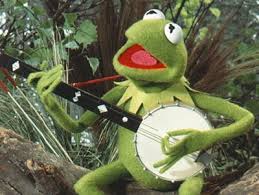Getting started with banjo
 Some basic considerations when getting started with banjo. What type of banjo? What materials are helpful, etc.
Some basic considerations when getting started with banjo. What type of banjo? What materials are helpful, etc.
Short version: Get a Deering Goodtime banjo, some fingerpicks, a cheap good tuner, and the classic Earl Scruggs 5-string banjo book.
Long version: There are a variety of considerations when getting started with banjo. The first choice is what kind of banjo. There are a few basic options: 5-string, tenor, plectrum, and of course those 6-string banjos for guitarists who need to fake the occasional banjo riff.
The most popular banjo-type is the 5-string banjo. This is the instrument you hear in bluegrass, and most bluegrass-influenced modern rock (Mumford and Sons, Avett Brothers, etc).
So, assuming that you are on-board with a 5-string banjo, the next choice is open-back vs. closed-back. Open-back banjos tend to be favored by clawhammer players (an old-time style). Folks in the bluegrass tradition usually like the louder, more ringing sound of a closed-back banjo. You can play bluegrass on either style (open vs. closed), so it’s also a matter of taste. Open-back banjos are a lot lighter – something to consider, if you intend to be a wandering minstrel.
The main thing is to just get a decent, inexpensive 5-string banjo to learn on. Then later, when you are a pro, or win the lottery, you can pick-up one of those beautiful gold-inlay models. These days, I’d recommend buying an instrument right off of amazon. They have a great return policy, and deliver right to your door, lickety-split. Two recommendations:
A) The best banjo for beginning/intermediate students: Deering Goodtime – open-back or closed- back
B) A well-liked and very inexpensive banjo: Gold Tone. A great value, but quality won’t be on par with the Deering, but a decent instrument at a very inexpensive price (approximately $200).
Naturally, it would be a good idea to pick up a case. Here’s a nice “gig bag” for approximately $25. “Gig bags,” are light and inexpensive – like a backpack for your banjo – great for an entry level instrument. If you get a high-end instrument, or plan to take it on an airplane, you’d want to invest in a hard shell case that fits your specific banjo.
The next thing you’d want to do is get basic essentials, all of which are quite inexpensive. a) strings – eventually you’ll break one, or it’ll be time to change them) b) fingerpicks c) a cheap, good tuner, and lastly d) The classic Earl Scruggs Banjo Method.
Now all you need is a great teacher. Red Pelican Music offers terrific banjo lessons online, as well in-person banjo lessons in the Los Angeles area 🙂
By Brian Robbins